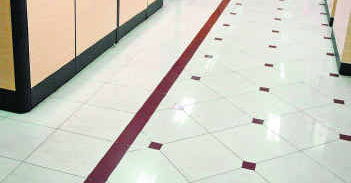Vitrified Tiles: What Are They?
These tiles are made using the vitrification
process which combines 40% clay and 60% silica in order to form vitrified tiles.
The process of vitrification makes the output product non-porous and hard and
this also gives them the added advantages over marble and similar natural stones
which are porous and requires a great deal of care.
Vitrified tiles do not require any kind of
maintenance at all. These are non abrasive and can also be used in areas which
are made use of a lot. Another great advantage these tiles have over hardwood or
any other type of flooring is that the designs are printed using soluble salts
and has the capacity of penetrating the surface of the tile to about 3mm.
Basically, this means that your vitrified tile has designs which are at a depth
of about 30% of the thickness of the tiles.
With so many advantages, these tiles have only one
disadvantage. These tiles are not yet available in numerous colors and shades.
Apart from this, the benefits they offer is beyond compare and will ensure an
elegant and durable flooring option for the entire home.
Other Advantages
- Changes in moisture level or temperature does not
contract or expand the tiles unlike it does to a wooden flooring.
- You can make use of spacers to create uniform gaps at the time of fixing
them or filling them.
- No maintenance is needed. All you need to do to care for your tiles is
sweep them.
Cleaning Tips
- To keep dusts away, you can use floor mats at
entrance points.
- Do not make use of harsh chemical solvents or cleaners on the tiles.
- Scrape out cracked or powdery joints and refill them at least once every
year so that they are maintained in good condition. Damp mopping is also
appropriate.



